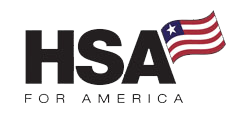QSEHRA (Qualified Small Employer Health Reimbursement Arrangements) offer a flexible way to provide health benefits without breaking the bank.
When you run a small business, offering health benefits can feel like walking a tightrope—balancing costs while keeping your employees happy.

Each year, the IRS adjusts the contribution limits to keep up with rising healthcare costs. For 2025, those limits have increased again, giving small businesses a bit more room to support their employees’ healthcare needs.
2025 QSEHRA Contribution Limits
- Self-Only Coverage: $6,350 per year ($529.16 per month)
- Family Coverage: $12,800 per year ($1,066.66 per month)
These updated limits reflect the ongoing adjustments to healthcare expenses, helping you stay competitive in the job market by offering meaningful benefits.
Benefits for Employers
For small employers, these enhanced limits offer an opportunity to provide more robust health reimbursement benefits.
This is particularly significant in the current job market, where attractive benefits packages are key to recruiting and retaining top talent.
Learn More: The Complete Guide to Small Business HRAs – 2025 Update
Compare Pricing on the Best Insurance Plans Available
QSEHRA Eligibility
Business Size
QSEHRA is specifically designed for small businesses.
To be eligible to offer a QSEHRA, a company must have fewer than 50 full-time equivalent employees (FTEs).
This makes it an ideal solution for many small businesses that are not subject to the employer mandate under the Affordable Care Act (ACA).
Note that part-time employees and seasonal workers are factored into the calculation of FTEs, so ensure you calculate your workforce accurately.
No Group Health Plan
Only businesses that do not offer a group health insurance plan may use a QSEHRA.
QSEHRA is intended to be an alternative to traditional group health insurance, not a supplement to it. If a company offers a group health plan, even for a subset of employees, they cannot simultaneously offer a QSEHRA.
Non-Discrimination Rules
The QSEHRA must be offered to all full-time employees on the same terms. However, employers can exclude certain categories of employees, such as:
- Part-time or seasonal workers
- Employees under 25 years old
- Those who have not completed 90 days of service
- Union employees (if the benefit is subject to collective bargaining)
- Non-resident employees working outside the U.S.
These exclusions must be consistent and not discriminatory in nature.
Minimum Essential Coverage (MEC)
The primary purpose of the QSEHRA is to allow employees of businesses that do not offer a group health plan to purchase insurance coverage in the individual/family market.
To receive reimbursements through QSEHRA, employees must have health coverage that qualifies as minimum essential coverage (MEC) under the ACA. This can include:
- Individual health insurance policies
- Marketplace plans
- Employer-sponsored plans (from a spouse’s employer)
- Medicare Part A, Part B, or Part C
Proof of Coverage
Employees must provide proof of their health coverage before they can receive reimbursements from the QSEHRA.
Employers are required to verify this coverage to ensure compliance with IRS rules. Acceptable proof typically includes a summary of benefits, an insurance card, or a statement from the insurance provider.
QSEHRA Mid-Year Eligibility and Proration
If an employee becomes eligible for QSEHRA partway through the year, you should prorate the annual contribution limit accordingly.
QSEHRA Flexibility in Budgeting
While the IRS sets maximum limits, there are no minimum contribution requirements for QSEHRAs.
You are not tied to any specific funding levels in future years. Furthermore, there is no requirement to commit QSEHRA funds in advance or segregate them from your operating capital.
You are free to use that money to operate your business until it’s actually distributed as a benefit.
This allows you to tailor their health benefits budget according to your own financial situation and the specific needs of your workforce.
What if the QSEHRA Limits Aren’t Enough?
In regions where the cost of living and healthcare is exceptionally high, the QSEHRA limits might be inadequate.
If you’re in this situation, you should consider offering an Individual Coverage HRA (ICHRA) instead.
Unlike QSEHRAs, ICHRAs have no maximum contribution limits. They also offer greater flexibility in terms of employee allowances.
Compare Pricing on the Best HealthShare Plans Available
QSEHRA Conclusion
QSEHRAs offer small businesses a smart, flexible way to provide meaningful health benefits without the complexity of traditional group plans.
With the increased contribution limits for 2025, you have even more room to support your employees’ healthcare needs and stay competitive in today’s job market.
If you want expert guidance on designing the right health benefits plan for your business, our Personal Benefits Managers are here to help. They’ll walk you through every step, ensuring you get the most out of your QSEHRA.
FAQ
Q: Can I offer a QSEHRA if I have part-time employees?
A: Yes, but QSEHRAs must be offered to all full-time employees on the same terms. You can exclude part-time employees if you choose, as long as exclusions are applied consistently.
Q: What happens if an employee loses their minimum essential coverage (MEC)?
A: If an employee loses MEC, they are no longer eligible to receive QSEHRA reimbursements. Once they regain qualifying coverage, they can resume receiving reimbursements.
Q: Are QSEHRA reimbursements taxable for employees?
A: No, QSEHRA reimbursements are tax-free for employees as long as they have MEC. Without MEC, reimbursements become taxable.
Q: Can QSEHRA funds be used for dental and vision expenses?
A: Yes, QSEHRA funds can reimburse qualified medical expenses, including dental and vision care, as long as the employee has MEC.
Q: How often can employees submit reimbursement claims?
A: This depends on the employer’s policy. Employers can allow claims on a monthly, quarterly, or annual basis, but it should be clearly communicated to employees.
For Further Reading:
Read More About Group Health Insurance Options in Your State

Wiley is President of HSA for America. He believes that consumers should have choice and price transparency, so they can make the best healthcare decisions for their needs. Read more about Wiley on his Bio page.



